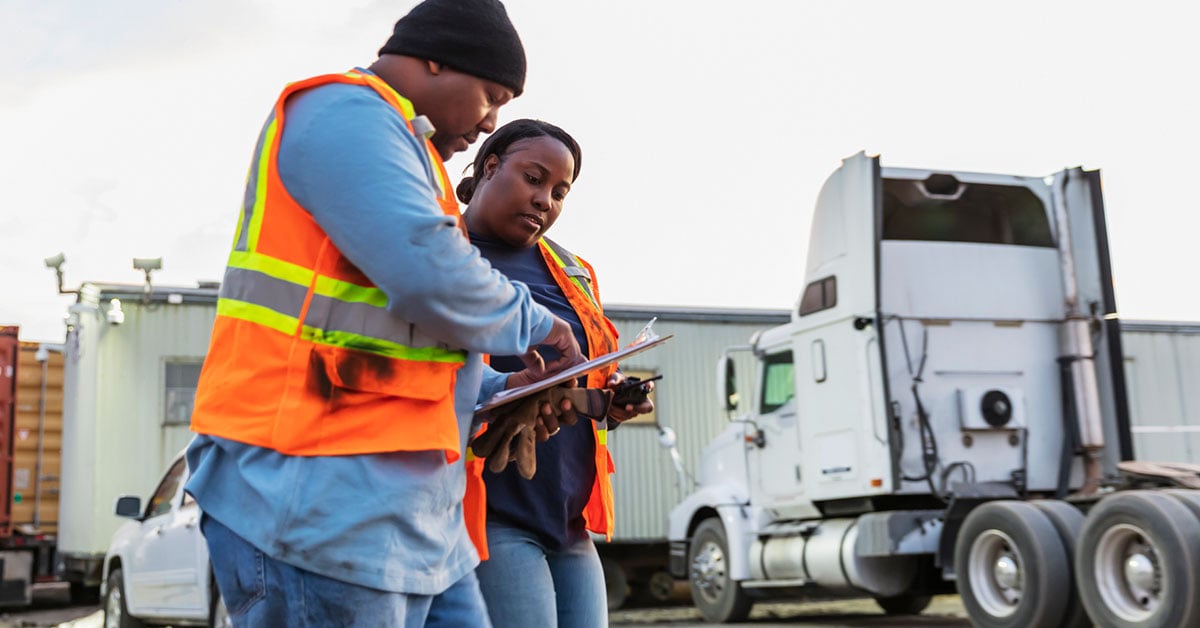How Men Can Be Better Allies for Women in the Trucking Industry
by Ellen Voie, on Mar 29, 2023 10:07:44 AM

The goal of Women In Trucking is to create a more gender diversity industry. We are proud of the fact that fifteen percent of our members are men who join because they support our mission. In fact, there are men who serve on our board of directors!
Why should we encourage men to join forces with us to introduce more women into transportation careers? Besides being the right thing to do, it makes good business sense. A McKinsey report, “found that the greater the representation [of women], the higher the likelihood of outperformance.”
Unfortunately, many men feel that gender diversity is a women’s issue, but it’s a leadership issue that affects everyone in the organization. In the book, Good Guys: How Men Can Be Better Allies for Women in the Workplace,” by David G. Smith and W. Brad Johnson, they break down allyship into three areas: interpersonal, public, and systemic.
The authors claim that men should take responsibility for creating a more gender diverse culture because, “they have the influence and the power to create change, and they are crucial to altering the status quo.” Elevating women in the workplace does NOT reduce the power of men and the greater influence of women in leadership is not a threat to men’s authority.
For men to be better allies, they first need to understand the perspective of their female co-workers. Ask questions and look for feedback. The authors suggest men should be situationally aware of women during meetings and interactions. Note who is speaking the most and who appears to be comfortable. Is anyone being interrupted or belittled?
Be sure to eliminate sexist words from your conversation. At Women In Trucking, we use the term staff when referring to working at a trade show or conference (we can’t “man” the booth.) Don’t assume women should take notes at a meeting and don’t expect her to bring the coffee.
Since the #MeToo movement, many men are concerned about mentoring or even working in close proximity to women. The authors suggest a mixed gender small group to meet for coffee or lunch if this is an issue. Consider including your partner when meeting a female outside of the office.
Public allyship includes speaking up when a sexist comment or event occurs. Take responsibility for intervening and implement the response. The authors even provide comments to make, including, “Did you just say that?” or, “We don’t do that here.”
Remove the word female when you introduce someone. Women don’t need to be reminded of their gender. Instead of female engineer, how about just calling her an engineer. Don’t make assumptions that women can’t or won’t do something, such as travel for work when she has a young family. Let her decide if the duties are right for her or not.
The third area of allyship is for men in leadership positions in your company. If it doesn’t come from the top, it’s not going to happen. Don’t delegate diversity and inclusion initiatives to your human resource department (typically female populated roles.)
Training is the key to a more inclusive culture. Talk about unconscious bias and learn to identify and avoid it. Establish employee resource groups or informal lunch discussions to understand the challenges minority groups experience. Set measurable goals and be sure to track your progress. Don’t just count how many women are hired but look at how many women have applied for a position.
You may be using the wrong terms in your recruiting efforts, as women are less attracted to words like hierarchy, aggressive, and risk taker. There’s a great deal of research on unconscious bias in recruiting, hiring, and advancing women in the workplace.
Goldman Sachs CEO David Solomon will not take a company public without at least one diverse board candidate, as the performance of boards with at least one woman director outperforms those without women. That’s an example of allyship in leadership.
Women can’t change our industry unless men are supportive and in agreement that diversity is something we all need to champion. Be one of the Good Guys and be a better ally.
Written by Ellen Voie, Founder of the Women In Trucking Association.
Like this kind of content?
As a member of the Women In Trucking Association, stay on top of emerging trends and business issues impacting transportation and logistics; learn the importance of gender diversity in the workplace and the need for more women drivers; and see best practices in encouraging the employment of women in the trucking industry. Join today! Learn More






